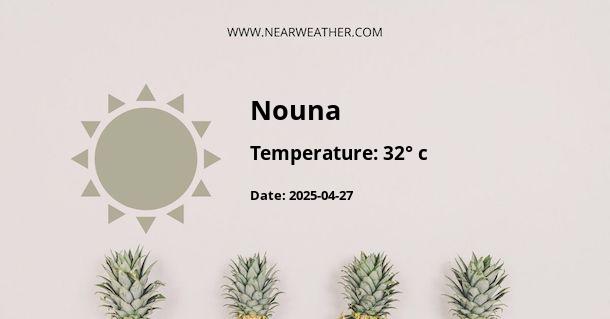Nouna, Burkina Faso: Climate and Weather Year Round
Nouna is a town located in the Boucle du Mouhoun Region of Burkina Faso. It is known for its diverse climate and weather patterns throughout the year. Understanding the climate of Nouna is essential for residents, tourists, and researchers alike. This article provides a comprehensive overview of Nouna's climate and weather conditions year round.
Geographical Location
Nouna is situated in the southwestern part of Burkina Faso, near the border with Mali. Its geographical location affects its climate and weather patterns. The town lies at an elevation of approximately 300 meters above sea level and is surrounded by the Sahelian savannah.
Climate Classification
Nouna falls under the Köppen climate classification of Aw, which signifies a tropical savannah climate. This classification is characterized by distinct wet and dry seasons.
Dry Season (November to April)
The dry season in Nouna typically starts in November and extends until April. During this period, the town experiences hot and dry weather conditions. The average temperature ranges from 29°C to 39°C (84°F to 102°F). The humidity levels are relatively low, making it feel even hotter. Precipitation is scarce, with only occasional isolated showers.
Strong and dusty Harmattan winds, originating from the Sahara Desert, are common during the dry season. These winds can bring sand and dust, reducing visibility and creating a hazy atmosphere. It is advisable to protect oneself from the dryness and dust by wearing appropriate clothing and using moisturizers.
Wet Season (May to October)
The wet season in Nouna occurs from May to October. This period is characterized by increased rainfall and lower temperatures. The average temperature ranges from 23°C to 32°C (73°F to 90°F).
June, July, and August are the wettest months, with heavy rainfall and thunderstorms. The average monthly precipitation during this period ranges from 100mm to 250mm. The rain revitalizes the landscape, turning it into lush greenery.
However, it is important to note that the rainfall in Nouna can be highly variable from year to year. Some years may experience below-average rainfall, leading to drought conditions, while others may have above-average rainfall, resulting in flooding. It is crucial for communities to adapt and develop resilient strategies to cope with these variations.
Climate Graph and Rainfall Distribution
The following graph visually represents the climate of Nouna throughout the year:
The graph illustrates the temperature and rainfall patterns in Nouna. The blue bars represent the monthly rainfall, while the red line represents the average temperature. The highest rainfall occurs during the wet season, particularly in June, July, and August. The temperature remains relatively high throughout the year, with the hottest months being March and April.
Effects on Agriculture and Livelihoods
The climate and weather conditions in Nouna play a significant role in shaping the local agricultural practices and livelihoods. The dry season presents challenges for farming, as water scarcity and high temperatures can negatively impact crop production. Farmers often rely on irrigation systems or small-scale water conservation techniques to sustain their crops during this period.
On the other hand, the wet season is crucial for agricultural activities in Nouna. The rainfall provides the necessary moisture for crop growth, enabling farmers to cultivate a variety of crops such as millet, sorghum, maize, and vegetables. The abundance of water also supports livestock farming, as grazing lands become more fertile.
Tourism and Outdoor Activities
Nouna's climate and weather conditions make it an attractive destination for outdoor enthusiasts and nature lovers. The dry season offers opportunities for activities such as wildlife safaris, bird watching, and exploring the Sahelian savannah. The clear skies and warm temperatures create a favorable environment for outdoor adventures.
During the wet season, the landscape transforms into a vibrant and lush ecosystem. The increased rainfall enhances the beauty of the surrounding nature reserves and national parks, providing a picturesque backdrop for hiking, camping, and nature photography.
Conclusion
Nouna, Burkina Faso, experiences a tropical savannah climate with distinct wet and dry seasons. The dry season from November to April is characterized by hot and dry weather, with occasional Harmattan winds. The wet season from May to October brings increased rainfall and lower temperatures, revitalizing the landscape. Understanding the climate of Nouna is crucial for agricultural practices, tourism, and overall planning and development in the region.
A - Nouna's Latitude is 12.733330 & Longitude is -3.866670.
A - Weather in Nouna is 33° today.
A - Climate Conditions in Nouna shows broken clouds today.
A - Humidity in Nouna is 34% today.
A - Wind speed in Nouna is 10.08 km/h, flowing at 267° wind direction. today.
